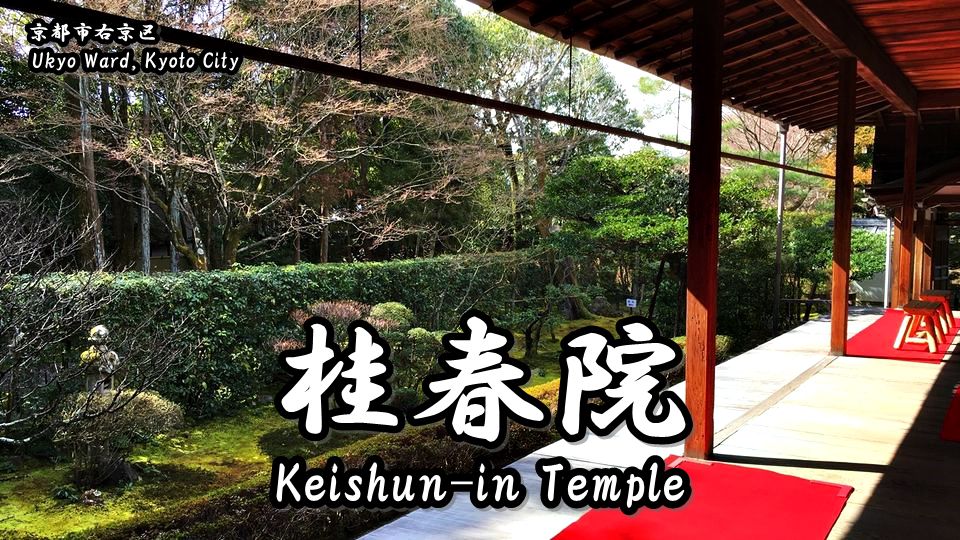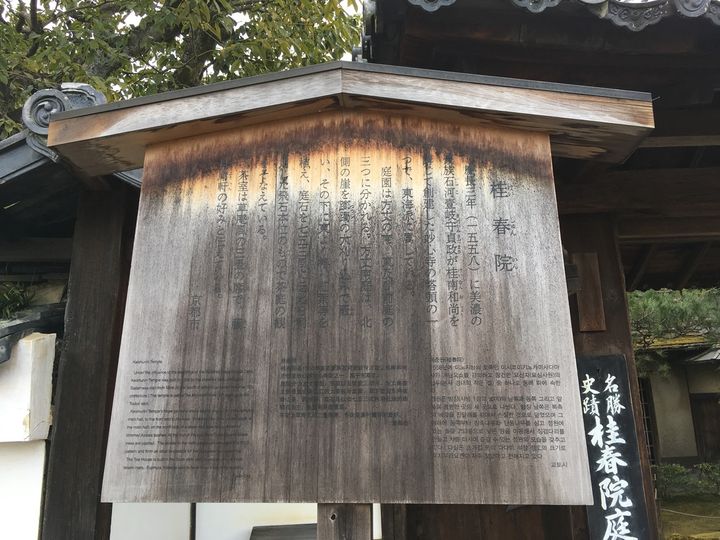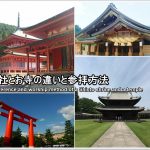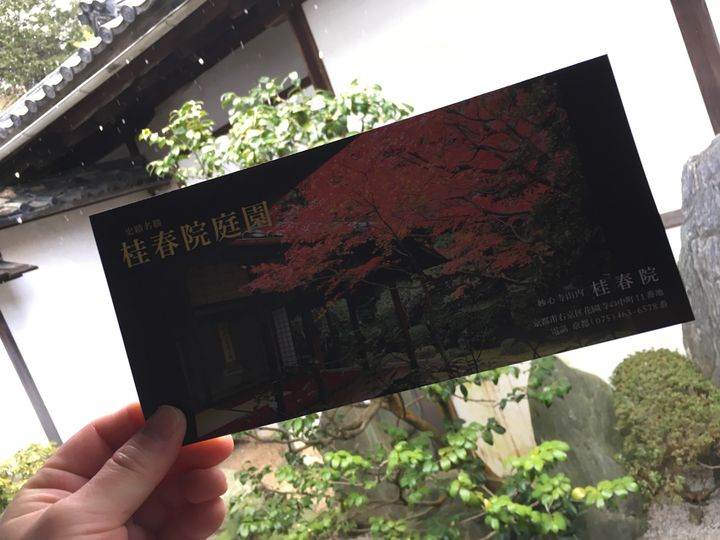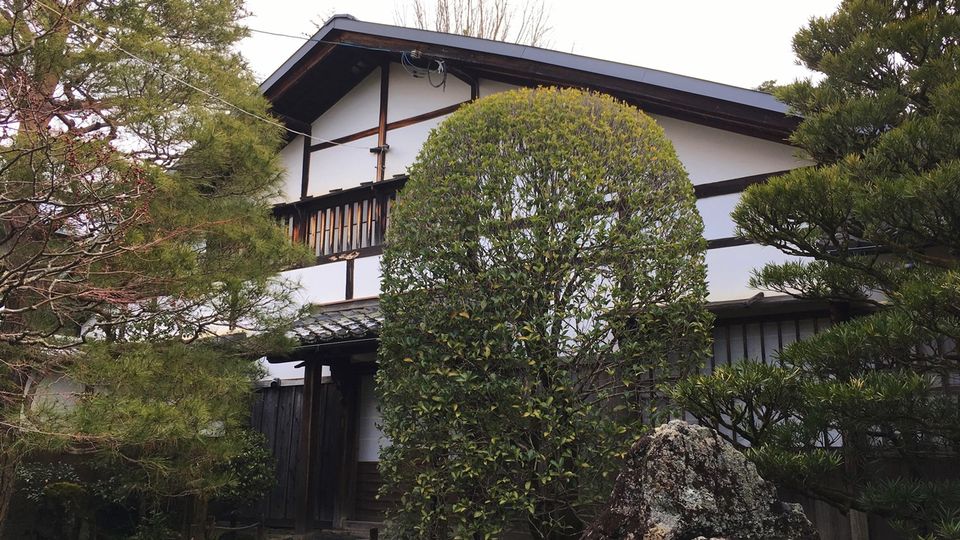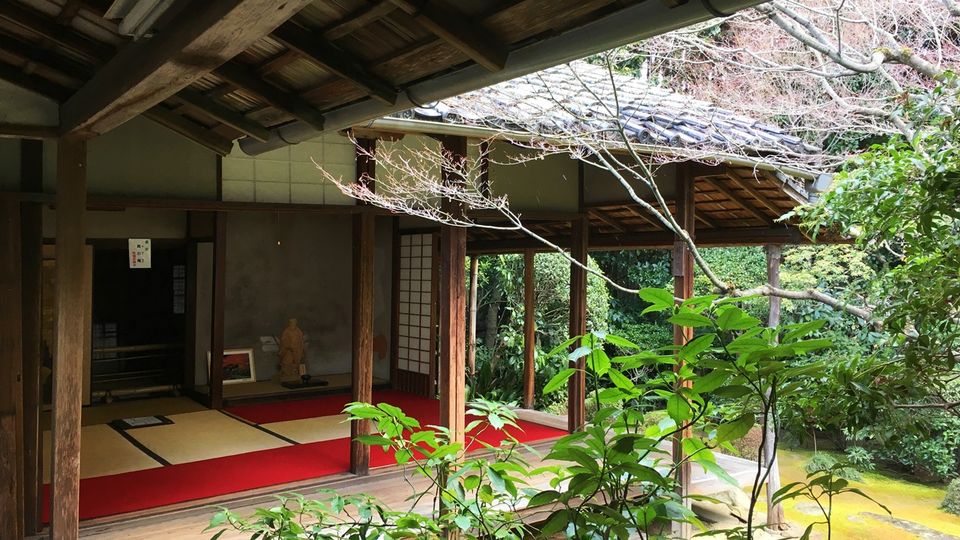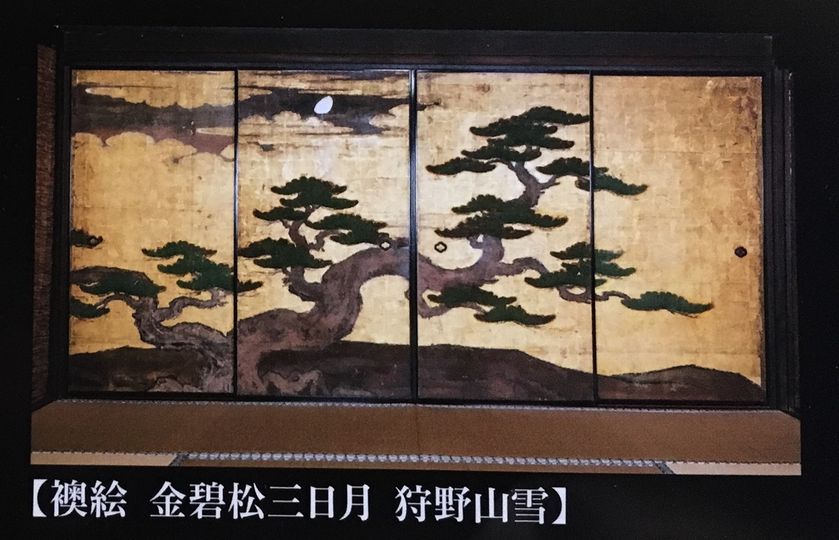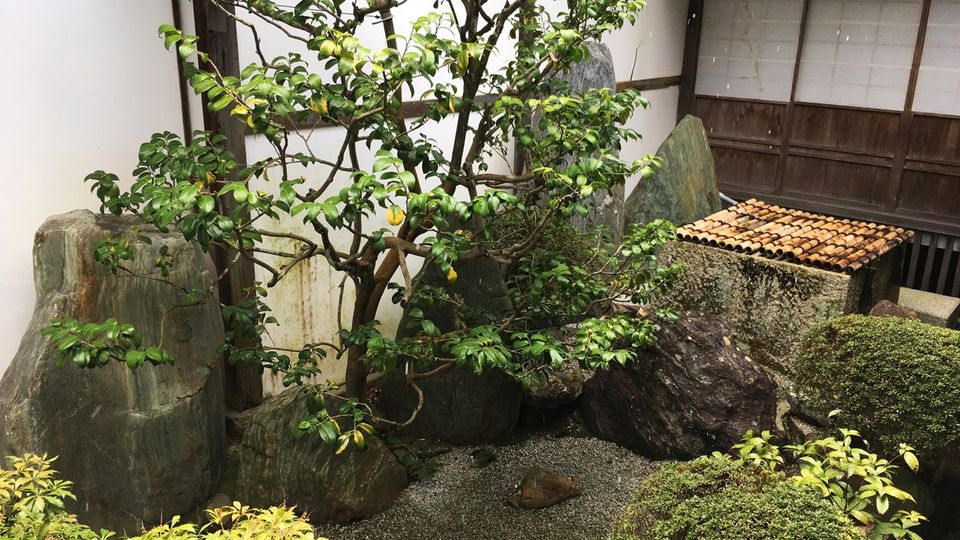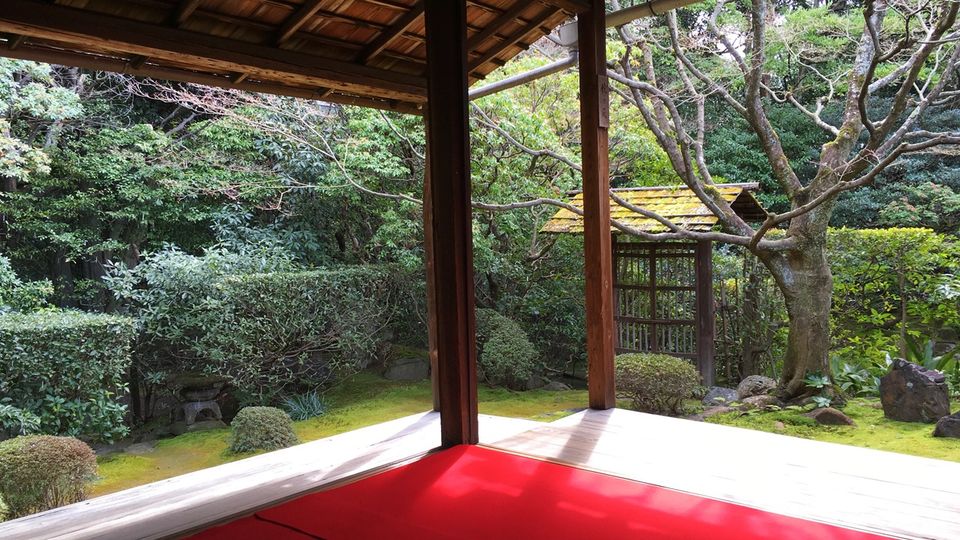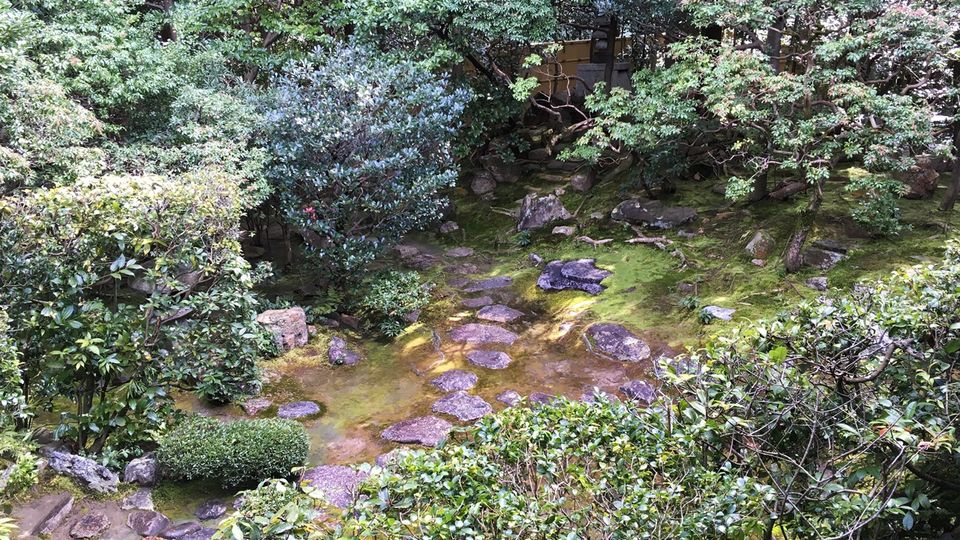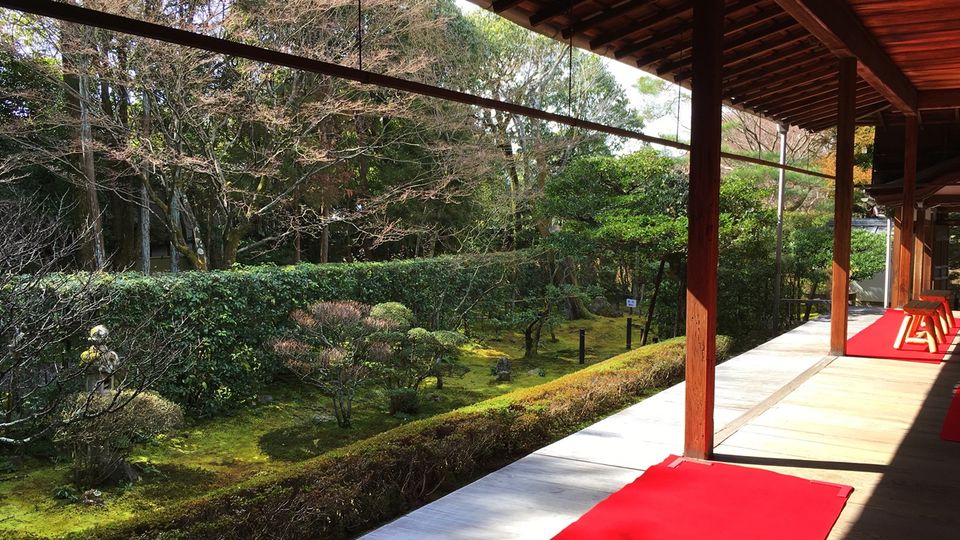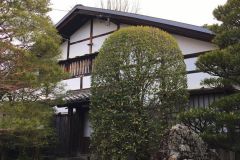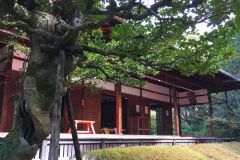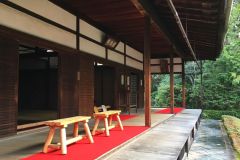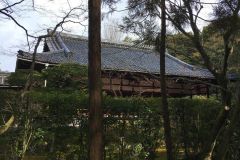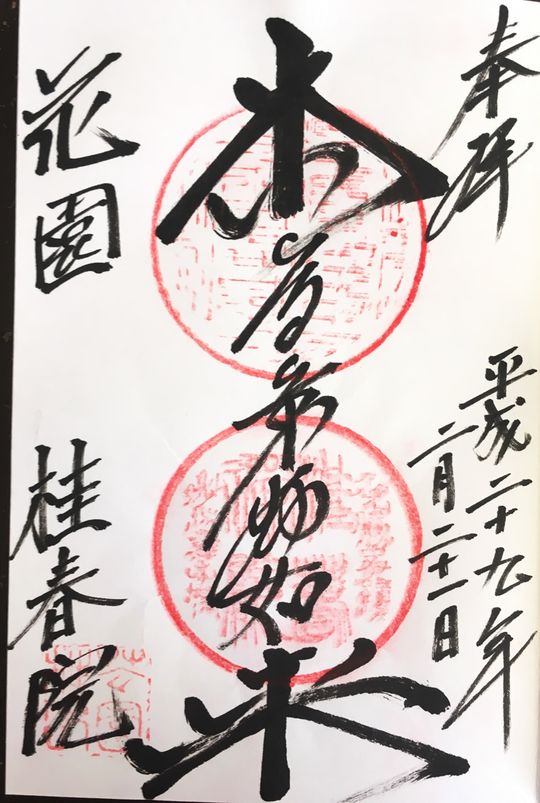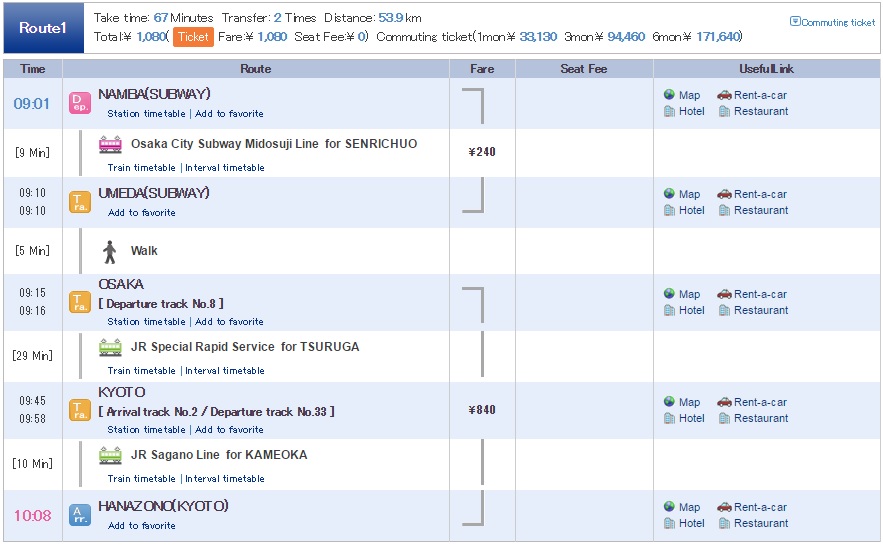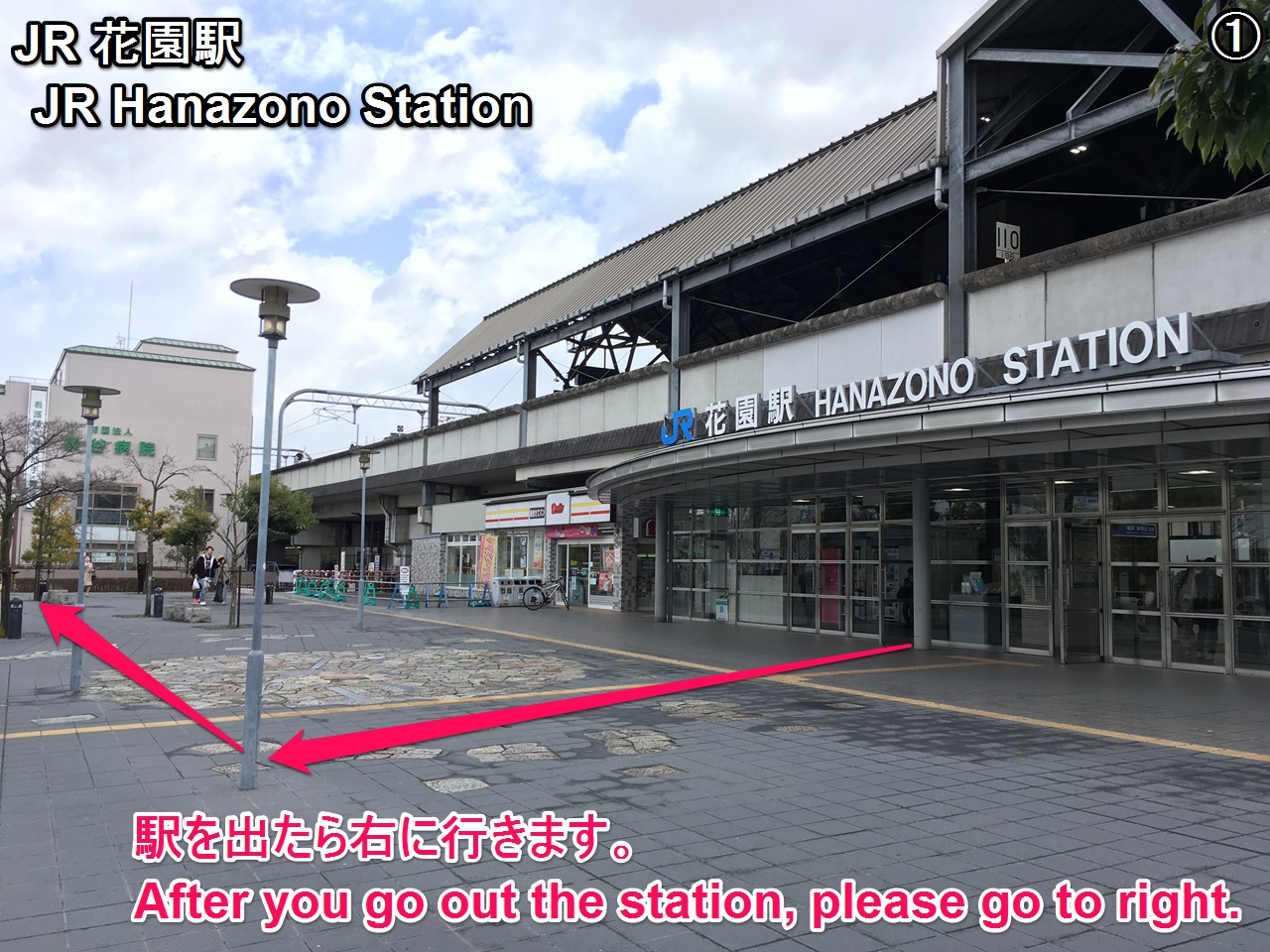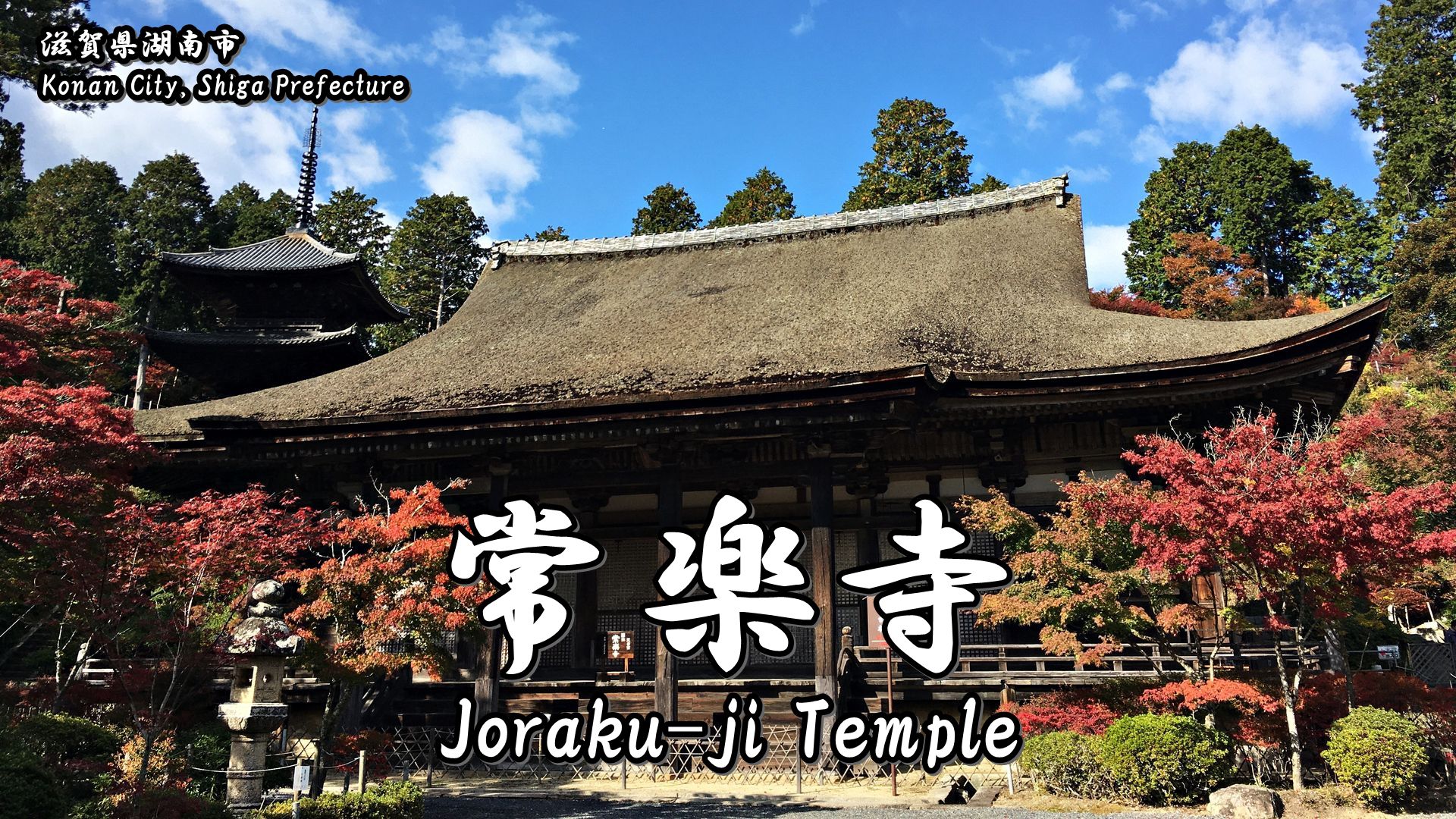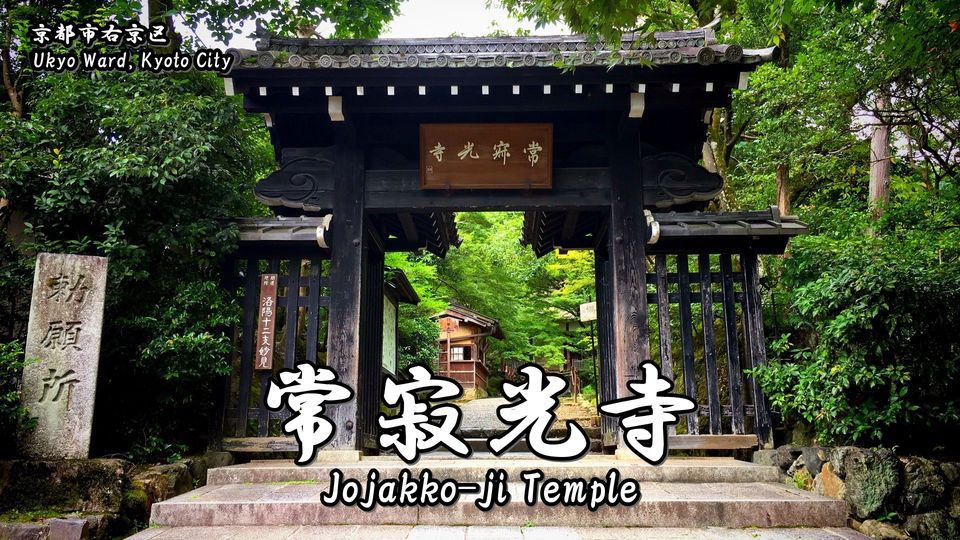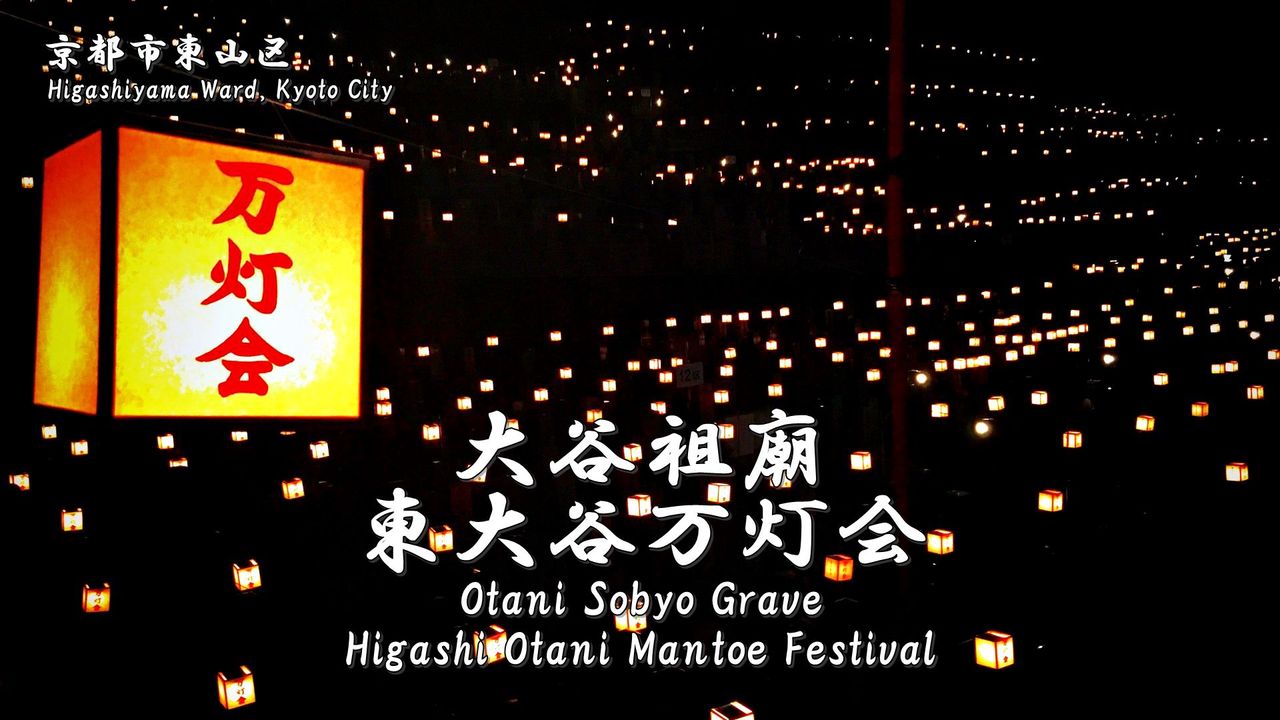Keishun-in (桂春院) is one of the sub-temples (塔頭:tatchu) of Myoshin-ji (妙心寺) which is located in Hanazono, Ukyo Ward, Kyoto City.
Myoshin-ji is the biggest Zen temple in Japan, and it has a total of 48 sub-temples.
Keishun-in is also one of these sub-temples.
Among those sub-temples, only Taizo-in, Daishin-in, and this temple are open to the public on a regular basis.
Highlight of this temple is four Japanese gardens.
It has four Japanese gardens and each of gardens have a distinctive charm.
These were created during the Edo period (江戸時代) and have been designated as a historic site (史跡), a place of scenic beauty (名勝).
History of Keishun-in
Let’s study the history of this sub-temple with me before introducing of Keishun-in (桂春院).
I think that we can enjoy the sightseeing of this sub-temple more by learning the history of it. XD
It was founded in 1598 by Hidenori ODA (織田秀則) who was a busho (a Japanese military commander) in the Azuchi-Momoyama period (安土桃山時代).
He was a grandchild of Nobunaga ODA (織田信長) who was the historically well-known Sengoku daimyo (戦国大名).
When the foundation of this temple, he invited Suian Sokiku (水庵宗掬) who was the chief priest of Myoshin-ji as founding priest.
This temple was called Kensho-in (見性院) at the time of the foundation.
After the death of Hidenori ODA, Sadamasa ISHIKAWA (石川貞政) of a clan in the Mino Province (美濃国) invited Keinan Shusen (桂南守仙) and repaired the buildings in 1632 of the Edo period in order to hold a memorial ceremony on the 50th anniversary of his father’s death, and also took one character from the posthumous Buddhist name of his father, ‘Tensenshukei Daizenjomon (天仙守桂大禅定門),’ and his mother, ‘Shoinmyoshun Daishi (裳陰妙春大姉),’ to give the temple the new name of Keishun-in ‘(桂春院).
Therefore, the buildings and the gardens of this temple were created during the Edo period.
About Keishun-in
Information
Address:11, Hanazono Teranonakacho, Ukyo-ku Kyoto-shi, Kyoto, 616-8036, Japan
Phone number:+81-75-463-6578
Foundation:1598
Founder:Hidenori ODA (織田秀則)
Sect:Rinzai sect Myoshin-ji School (臨済宗妙心寺派)
Principal image:Yakushi Nyorai (薬師如来:Bhaisajyaguru)
Open
9:00~17:00
Admission Fee
500 yen
Other information
・Please ask temple’s staff where you can take photos and videos.
・Worship method of a shinto shrine and a buddhist temple, please refer to the following article.
Next, Let’s go to see highlights of this temple with me!
Highlights of Keishun-in
- 表門:Omote-mon (gate)
- 庫裏:Kuri
- 書院/既白庵*:Shoin / Kihaku-an (Tea house)*
- 方丈*:Hojo*
- 清浄の庭 (史跡・名勝)*:Shojo-no-niwa (garden) (Historic Sites・Special Places of Scenic Beauty)*
- 侘の庭 (史跡・名勝)*:Wabi-no-niwa (garden) (Historic Sites・Special Places of Scenic Beauty)*
- 思惟の庭 (史跡・名勝)*:Shii-no-niwa (garden) (Historic Sites・Special Places of Scenic Beauty)*
- 真如の庭 (史跡・名勝)*:Shinnyo-no-niwa (garden) (Historic Sites・Special Places of Scenic Beauty)*
This mark ‘*‘ is a pay area.
表門:Omote-mon (gate)
Omote-mon (gate) was buint in the Edo period and has been designated as a tangible cultural properties designated by Kyoto Prefecture.
庫裏:Kuri
Kuri is the priest’s living quarters or the kitchen of a temple, has been designated as a tangible cultural properties designated by Kyoto Prefecture.
書院/既白庵*:Shoin / Kihaku-an (Tea house)*
Shoin was buint in the Edo period and has been designated as a tangible cultural properties designated by Kyoto Prefecture.
Kihaku-an (Tea house) was relocated from the Nagahama Castle (長浜城) and reconstructed in 1631 of the Edo period.
It is said that this tea house was particularly favored by Yoken FUJIMURA (藤村庸軒) who was one of the master of tea ceremony in Japan.
方丈*:Hojo*
Hojo was built in 1631 of the Edo period, has been designated as a tangible cultural properties designated by Kyoto Prefecture.
Fusuma pictures which was drawn in the Edo period by Sansetsu KANO (狩野山雪) who was one of the pupil of Sanraku KANO (狩野山楽) are displayed in this building.
清浄の庭 (史跡・名勝)*:Shojo-no-niwa (garden) (Historic Sites・Special Places of Scenic Beauty)*
Shojo-no-niwa (garden) has been designated as a historic site (史跡), a place of scenic beauty (名勝).
‘Shojo (清浄)’ has the meaning of ‘the state of a person, pure at heart or innocent’.
This small garden has the role as the courtyard of Hojo and Shoin.
侘の庭 (史跡・名勝)*:Wabi-no-niwa (garden) (Historic Sites・Special Places of Scenic Beauty)*
Wabi-no-niwa (garden) has been designated as a historic site (史跡), a place of scenic beauty (名勝).
‘Wabi (侘)’ has the meaning of ‘taste for simple and quiet’.
思惟の庭 (史跡・名勝)*:Shii-no-niwa (garden) (Historic Sites・Special Places of Scenic Beauty)*
Shii-no-niwa (garden) has been designated as a historic site (史跡), a place of scenic beauty (名勝).
Stones in this garden are expressing the 16 Rakans (十六羅漢:Sixteen Arhats).
‘Shii (思惟)’ has the meaning of ‘the act of pursuing truth’.
真如の庭 (史跡・名勝)*:Shinnyo-no-niwa (garden) (Historic Sites・Special Places of Scenic Beauty)*
Shinnyo-no-niwa (garden) has been designated as a historic site (史跡), a place of scenic beauty (名勝).
‘Shinnyo (真如)’ has the meaning of ‘an unembellished figure’.
Small stones form a line in order of 7 stones, 5 stones and 3 stones from right side.
These stone arrangement expresses a night with a full moon.
Photos of Keishun-in
Goshuin (red ink stamp) of Keishun-in
Goshuin of this temple is “Yakushi Nyorai (薬師如来:Bhaisajyaguru)” which is the principal image of this temple.
We can get this goshuin in the reception desk of the entrance. (300 yen)
How to get to Keishun-in
Keishun-in is in the precincts of the Myoshin-ji.
Nearest station is JR Hanazono Station or Randen Kitano Line Myoshin-ji Station.
We can also go by bus from ‘JR Kyoto Station’, ‘Hankyu Kawaramachi Station’, and ‘Keihan Gion-Shijo Station’.
From Osaka Sta. to Hanazono Sta. (by train)
Timetable and Route Search (train)
1.Get on the JR Kyoto Line from Osaka Station to Kyoto Station and change to the JR Sagano Line.
2.Get on the JR Sagano Line from Kyoto Station to Hanazono Station.
From Namba Sta. to Hanazono Sta. (by train)
Timetable and Route Search (train)
1.Get on the Osaka Metro Midosuji-Line from Namba Station to Umeda Station and change to the JR Kyoto Line.
2.Get on the JR Kyoto Line from Osaka Station to Kyoto Station and change to the JR Sagano Line.
3.Get on the JR Sagano Line from Kyoto Station to Hanazono Station.
From Kyoto Sta. to Hanazono Sta. (by train)
Timetable and Route Search (train)
1.Get on the JR Sagano Line from Kyoto Station to Hanazono Station.
From JR Hanazono Station (on foot)
It’s about 6 minutes (400m) on foot.
From Myoshinji Station (on foot)
It’s about 5 minutes (300m) on foot.
Get on a bus from JR Kyoto Station
Timetable and Route Search (bus)
Please get on a Kyoto City Bus No.26 (Kyoto Sta.[D3]) and get off Myoshinji Kitamon-mae (Myoshinji Temple).
Bus company:Kyoto City Bus
Routes/Destination:26/Bound for Omuro Ninnaji Temple
Boarding bus stop:Kyoto Sta.[D3]
Alighting bus stop:Myoshinji Kitamon-mae (Myoshinji Temple)
Bus fare:230 yen
Get on a bus from Kyoto Kawaramachi Station
Timetable and Route Search (bus)
Please get on a Kyoto City Bus No.10 (Shijo Kawaramachi [A]) and get off Myoshinji Kitamon-mae (Myoshinji Temple).
Bus company:Kyoto City Bus
Routes/Destination:10/Bound for Kitano-tenmangu Shrine
Boarding bus stop:Shijo Kawaramachi [A]
Alighting bus stop:Myoshinji Kitamon-mae (Myoshinji Temple)
Bus fare:230 yen
Time required:About 43 min
Get on a bus from Gion-Shijo Station
Timetable and Route Search (bus)
Please get on a Kyoto City Bus No.10 (Shijo Keihan-mae [C]) and get off Myoshinji Kitamon-mae (Myoshinji Temple).
Bus company:Kyoto City Bus
Routes/Destination:10/Bound for Kitano-tenmangu Shrine
Boarding bus stop:Shijo Keihan-mae [C]
Alighting bus stop:Myoshinji Kitamon-mae (Myoshinji Temple)
Bus fare:230 yen
Time required:About 40 min
Take a taxi
From Kyoto Station:about 3,000 yen (20 minutes)
From Gion-Shijo Station:about 2,800 yen (15 minutes)
・Let’s show a taxi driver the following phrase.
・If you want to call a taxi, let’s show the following phrase.
Phone number of taxi dispatch (Around the Kyoto Station)
Hotel search & reservation around Keishun-in
How did you like it?
Have a nice trip!

